-
Comprehension
-
Reading & Spelling
- Mathematics
-
Assessments
-
Diagnostic assessments
- Comprehension, Language, Memory Assessments
- Reading and Spelling Assessments
- Autism Assessments
- Reasoning and Thinking Assessments
- Vocabulary Assessments
- Early Childhood Assessments
- Dyslexia Assessments
- Phonics/Phonemic Awareness Assessments
- Math Assessments
- Fluency Assessments
- Writing Assessments
- Visual/Visual Motor Assessments
- Make Learning Fun
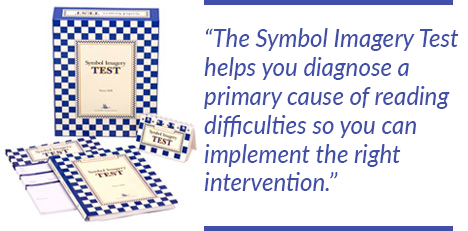
-
Diagnostic assessments
- Workshops
- Blog & News
Support for the Classroom
Free Downloadable Resources—Looking for resources to support your instruction in developing the imagery-language connection for your students? We've got fun-filled lesson packets and sample chapters from teacher's manuals to bolster your instruction. Supplemental lesson packets feature high-imagery stories, vocabulary, Higher Order Thinking questions, puzzles, and more! Sample chapters offer educators a sneak peek at our unique programs, all based on dual-coding theory, and helpful tips on how to incorporate the concept into instruction.
Videos—Curious about how to use our programs in your classroom? These videos provide an overview of select products and feature Teacher Tips on how to best integrate programs into your instruction.
Tips for Instruction—We know how busy you are! Our Tips for Instruction are designed for educators who are familiar with our programs or those who are interested in learning more about the imagery-language connection for reading, comprehension, and math. Tips are presented in a format for quick reference with the option to learn more.
Downloadables
Imagine That! Science Sampler!
This generous packet features 18 high-imagery stories covering fascinating topics that are rich in science content.
Download PDF →Celebrating National Trails Day
This new lesson packet, featuring stories from our Visualizing and Verbalizing Stories, includes high imagery and engaging content written at a K-7th grade level. Students will also enjoy fun puzzles!
Download PDF →Imagine That! Heroes Packet
This special packet helps students visualize the brave acts of heroes and it includes six Imagine That! stories, vocabulary practice, higher order thinking questions, and puzzles.
Download PDF →Inspire Kindness!
This Imagine That! lesson packet features four stories about acts of kindness (written at a 2nd-4th grade level), a writing activity, and word search.
Download PDF →Seeing Stars Decoding Workbooks Sample Packet
Decoding Workbooks provide excellent and extensive decoding practice. This sample packet includes lessons from all six books!
Download PDF →Imagine History - The Discovery of America Sample
Experience the richness of history with imagery to better comprehend it and embed it into memory! This sample chapter from Imagine History: The Discovery of America takes students on a journey through imagery to meet the early Americans. This groundbreaking book can be used specifically with the steps of the Visualizing and Verbalizing program or as a stand-alone resource. Most applicable for grades 3 and above.
Download PDF →Imagine History - The Birth of America Sample
This sample chapter helps students to visualize and understand the important process that led to the drafting of the U.S. Constitution. The Imagine History Series is written to develop the imagery-language connection for American history.
Download PDF →Imagine History - The Battle for America Sample
This sample chapter takes students on a journey through imagery to meet Aztecs, pioneers, and President Lincoln. The Imagine History series is written to develop the imagery-language connection for American history. It can be used specifically with the steps of the Visualizing and Verbalizing program or as a stand-alone resource. This book is written at a 5th grade level.
Download PDF →Imagine History - The Rebuilding of America Sample
This sample chapter paints a picture of America's "Great Melting Pot" when waves of immigrants were trying to start new lives in the U.S. The Imagine History series is written to develop the imagery-language connection for American history. It can be used specifically with the steps of the Visualizing and Verbalizing program or as a stand-alone resource. This book is written at a 5th grade level.
Download PDF →Vanilla Vocabulary Sampler
This packet includes sample activities to develop vocabulary using strategies from the Visualizing and Verbalizing program. The packet includes workbook pages from Vanilla Vocabulary Level 1 and Level 2, along with a story from Ivan, King of the Neighborhood which lets students experience new vocabulary words in context.
Download PDF →Imagine That! Life Science
Written at a 6th-8th grade level, these challenging, high-imagery life science stories introduce true, fun, and unusual topics.
Download PDF →Myths and Legends
Six intriguing stories from our new Myths and Legends book are accompanied by vocabulary practice, Higher Order Thinking questions, and puzzles. Written at a 5th-8th grade level, these high-imagery stories feature heroes, gods, and wonders for students to visualize and interpret.
Download PDF →Seeing Stars® Manual - Sampler
Download our sample chapters to explore how the Seeing Stars® program develops symbol imagery—the ability to visualize sounds and letters in words—as a basis for orthographic awareness, phonemic awareness, word attack, word recognition, spelling, and contextual reading fluency.
Download PDF →On Cloud Nine® Manual - Chapter 2 Sample
The On Cloud Nine® (OCN) program develops the ability to image and verbalize the concepts and processes of math. Download our sample chapter to explore how concept imagery and numeral imagery are integrated with language to improve both mathematical reasoning and mathematical computation.
Download PDF →Visualizing and Verbalizing® Manual - Chapter 2 Sample
The Visualizing and Verbalizing® program develops concept imagery—the ability to create an imaged gestalt from language—as a basis for comprehension and critical thinking. Download our sample chapter to explore how the development of concept imagery improves reading and listening comprehension, memory, oral vocabulary, critical thinking, and writing.
Download PDF →Talkies® Manual - Chapter 3 Sample
Download our sample chapter to explore how the Talkies® program is the primer to the Visualizing and Verbalizing program for students who need simpler, smaller steps of instruction to establish the imagery-language connection.
Download PDF →LiPS® Manual - Introduction Sample
The manual describes the important questioning techniques that stimulate articulatory feedback for verifying sounds within words. LiPS identifies and classifies speech sounds as related units, labeling the articulatory feedback for application to phoneme sequencing tasks.
View Sample →Videos
Imagine That! Stories
The V/V® Imagine That! Stories have nonfiction stories to develop imagery for oral and written language comprehension. These challenging, high-imagery stories introduce true and unusual topics for students to visualize and interpret.
Visualizing and Verbalizing Workbooks
V/V Workbooks have high-imagery stories and questions that help students develop concept imagery for language comprehension and critical thinking. Each story is accompanied by workbook activities.
Seeing Stars Decoding Workbook set
Students need a LOT of decoding practice to develop fluent word attack and word recognition skills. The Seeing Stars Decoding Workbooks provide an excellent and extensive decoding practice for both classroom and clinical settings.
Tips for Instruction
3 Tips for Developing Sight Word Vocabulary


Nanci Bell working with a student on sight words.
The complex skill of reading requires the integration of auditory, visual, and language skills. Word recognition (orthographic processing and instant recognition of sight words) is a necessary component in the cascade of sub-skills needed for global reading.
Students need extensive practice to acquire a substantial sight word vocabulary (words that are recognized by sight, not decoded). Choose a high-frequency word list to get started. If you are using the Seeing Stars® program, use the Star Words List. Or you can select something like the Dolch Word List.
Here are three helpful tips for an effective sight word practice lesson:
-

Capture, Categorize, and Memorize—Scan the list with your student and capture words that aren't instantly read. Write each word on an index card and categorize cards into Slow, Medium, and Fast groups. Repetitively practice words each day, graduating words from Slow to Medium to Fast groups, until each word is memorized for instant recognition.
-
Use Symbol Imagery Exercises—Reinforce word recognition by using strategies such as air-writing the word or identifying specific letters, all from visual memory. This is especially helpful for words that don't play fair, meaning they are not phonetically consistent (e.g. 'friend'). Example:
Teacher: "Write the letters in the air and say the letters as you write them. Now tell me the third letter you see."
Student: "I see an 'I'."
Teacher: "Great job! And what letter do you see right after the 'I'?"
Student: "It's an 'E'!" -
Repetition and Practice—Repetition is critical for sight words to truly become automatic. The Up and Down the Word-Ladder activity is a fun way to engage students for additional practice. Line up seven to ten sight words vertically to create your word-ladder. Starting at the bottom, have the student touch and say each word as they climb up. Next, have them climb back down. Then try it again, but this time put each word to sleep by turning the card over as they climb up or down. Reshuffle the cards and create a new word-ladder. Reminder: Check out page 180 in your Seeing Stars manual for more games and activities, or make up your own! The key is repetition and practice.
Strategies to Improve Comprehension

The Imagine That! Stories are a great supplement to the Visualizing and Verbalizing® program. They are also used with Seeing Stars® and LiPS® students to develop fluency and comprehension. These high-interest and engaging stories include graded reading levels to develop the imagery-language connection for listening and reading comprehension. Here are some helpful hints to improve comprehension with the Imagine That! Stories:
-
Practice both reading and listening comprehension, even for older students and students with decoding difficulties. Alternate between reading an Imagine That! story and having the student read the story. Students love the high interest, fun, and engaging content found in Fascinating People and Wonders of the Natural World.
-
Overlap grade levels depending on the task. This allows you to differentiate your lesson based on student need. Example: Try a Whole Paragraph task at a 4th-grade level and then try a Multisentence by Multisentence task with a 5th-grade story.
-
Scaffold the lesson by introducing unknown vocabulary first. Show a picture of a new vocabulary term or do a quick Word Imaging activity to check that the student is visualizing the word.
-
Develop Higher Order Thinking skills by prompting the student. Refer to student's key images from the text. Example: From everything you pictured, what do you predict will happen next?
-
Extend the lesson to address English Language Arts standards, such as asking students to cite evidence from text. You can prompt students to recall their images that support the evidence from the story.
-
Extend the lesson to a writing activity, where students use their imagery to create cue cards for each "chunk" of the story. The cue cards are then sequenced in an outline format and used to create a coherent written summary. A card will include the main idea (image) of each chunk along with the most important supporting details.
How to Deliver an Effective LiPS Lesson: 3 Tips for Dynamic Instruction

The Lindamood Phoneme Sequencing (LiPS) Program has been used effectively for over 30 years in developing phonemic awareness as a foundation for word reading, spelling, and speech. A key difference in the LiPS Program is its focus on oral-kinesthetic feedback in phonemic awareness for students who have difficulty perceiving the individual sounds blended within words. For example the oral-kinesthetic features of the sound for the letter 'P' can be labeled Lip Popper ("Make the sound for the letter 'P' and tell me what you feel your mouth doing"). Check out these tips and reminders to help you deliver dynamic instruction:
-
Tip 1: Drive the Sensory Bus
Use language to bring articulatory feedback to a conscious level. For example, the language, "When you say 'flame' what do you feel after the lip cooler?" develops oral-kinesthetic feedback, whereas the language, "What sound comes after the 'F'?" does not. Review the Responding to the Response technique on page 5 in your LiPS manual. -
Tip 2: Develop the Ability to Hold and Compare
Students must be able to monitor their own learning process to determine if they are accurate in reading and spelling. Monitoring requires the ability to compare the response to the stimulus: the ability to hold and compare. When tracking sounds with mouth pictures or colored squares, remember to use a three-step process to help develop the ability to hold and compare: (1) student repeats both the old word (stimulus) and the new word (response), (2) student touches and says sounds for old word and new word, and (3) student makes the change and labels what she is doing. Reminder: See page 86 in your LiPS manual for a visual cue card. -
Tip 3: Integrate LiPS with the Seeing Stars program
Since reading fluency requires an integration of component parts, it is important to develop symbol imagery as a foundation for phonemic awareness, orthographic awareness, word recognition, spelling, and fluency. Don't wait to complete all steps of the LiPS Program before starting Seeing Stars. You can overlap steps from the Seeing Stars program, such as letter imagery, airwriting, and high frequency Star Words practice. During your Consonant/Vowel review or while Tracking with Colored Squares, you can question for symbol imagery as well as for the articulatory label. For example: 'T'—/t/—Tongue Tapper (Letter Image—Sound—Label).
How to Apply Concept Imagery to Increase Vocabulary

“It is impossible even to think without a mental picture.”
- Aristotle
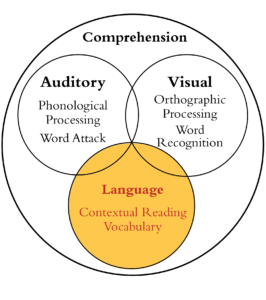 In the field of reading, educators work with struggling students to develop phonemic awareness, sight words, and fluency. Many students have success in increasing their decoding skills, yet they may still struggle with background knowledge, vocabulary, and reading comprehension. They often continue to struggle on state achievement tests. Many are also English learners with limited vocabulary terms, struggling to learn a new language while also trying to meet rigorous standards.
In the field of reading, educators work with struggling students to develop phonemic awareness, sight words, and fluency. Many students have success in increasing their decoding skills, yet they may still struggle with background knowledge, vocabulary, and reading comprehension. They often continue to struggle on state achievement tests. Many are also English learners with limited vocabulary terms, struggling to learn a new language while also trying to meet rigorous standards.
We know that vocabulary is one of the five major components of effective reading instruction, and also a critical factor in comprehension. However, many strategies to introduce or practice vocabulary skills lack a specific methodology based on how our brain processes words and meaning. In our instructional practice, when we looked at vocabulary development, the questions for us were numerous. How do we store meanings of words in our brains? What is the cognitive function(s) we use? How can we stimulate vocabulary effectively and efficiently, and speed up the acquisition of it?
Ask yourself what works in your brain when you think of a concrete word. Try the word “recital.” What happened in your brain? Try an easier word like “horse.” Now try “cat.” How about “tiger?” Do you notice that you image – visualize? For “recital,” did you see a girl playing a piano or an adult playing the cello?

Sentences should be high in imagery. Question the student to what they visualize for the sentence. They should be able to verbalize the relevant details. (Note: This process is explicitly developed through the Visualizing and Verbalizing program, and may need to be done intensively for some students before they can apply concept imagery to vocabulary development).
2. Student creates their own sentence – The student verbalizes his own sentence and, if possible, writes the sentence. The goal is for his sentence to be (1) personal, using the word in a context familiar to him, (2) descriptive by comparison, and (3) humorous or vivid or exaggerated. Help students avoid sentences that do not include imagery to support the definition, such as “The tree was immense.” Instead, this sentence could read “The immense redwood tree was as large as the tall skyscraper.”
 3. Create vocabulary cards – For additional practice, or for challenge words, create a 3x5 card with the word on one side and the definition and personal sentence, with a blank for the word, on the other side. The blank allows students to hypothesize, and visualize from context, the word being learned. Thus, they can practice from both sides of the card. As an extra strategy, have the student draw a simple picture of the sentence on the card, incorporating the details he has previously verbalized.
3. Create vocabulary cards – For additional practice, or for challenge words, create a 3x5 card with the word on one side and the definition and personal sentence, with a blank for the word, on the other side. The blank allows students to hypothesize, and visualize from context, the word being learned. Thus, they can practice from both sides of the card. As an extra strategy, have the student draw a simple picture of the sentence on the card, incorporating the details he has previously verbalized.
4. Use the word in conversation – Encourage the student to use the word in conversation. You can create a Challenge game between two students. Choose five words for the week (or day), then each student tries to use a word during a conversation with his partner. They can create a nonverbal signal, like holding up the number of fingers for each word used, or track their points in a Vocabulary log.
5. Practice the word in context – Select texts where the student can experience their new words in context. Have students highlight the words as they experience them during the story.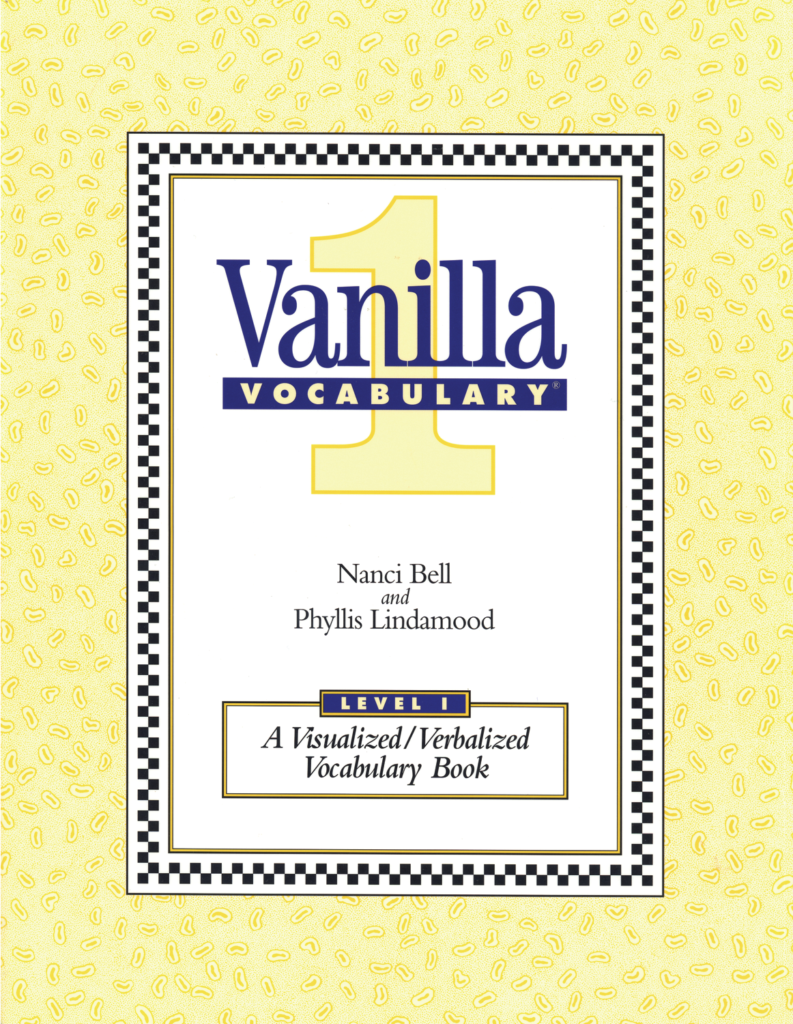 What words to choose? You can choose your own based on your students’ age and ability level, as well as the content and curriculum you are teaching. The Vanilla Vocabulary series is also a great supplemental resource with over 1,800 high frequency words, grades 1- 6. The Gunny and Ivan Adventure companion readers included in this series are ideal for practicing these words in context.
What words to choose? You can choose your own based on your students’ age and ability level, as well as the content and curriculum you are teaching. The Vanilla Vocabulary series is also a great supplemental resource with over 1,800 high frequency words, grades 1- 6. The Gunny and Ivan Adventure companion readers included in this series are ideal for practicing these words in context.
- Aristotle
 In the field of reading, educators work with struggling students to develop phonemic awareness, sight words, and fluency. Many students have success in increasing their decoding skills, yet they may still struggle with background knowledge, vocabulary, and reading comprehension. They often continue to struggle on state achievement tests. Many are also English learners with limited vocabulary terms, struggling to learn a new language while also trying to meet rigorous standards.
In the field of reading, educators work with struggling students to develop phonemic awareness, sight words, and fluency. Many students have success in increasing their decoding skills, yet they may still struggle with background knowledge, vocabulary, and reading comprehension. They often continue to struggle on state achievement tests. Many are also English learners with limited vocabulary terms, struggling to learn a new language while also trying to meet rigorous standards.
We know that vocabulary is one of the five major components of effective reading instruction, and also a critical factor in comprehension. However, many strategies to introduce or practice vocabulary skills lack a specific methodology based on how our brain processes words and meaning. In our instructional practice, when we looked at vocabulary development, the questions for us were numerous. How do we store meanings of words in our brains? What is the cognitive function(s) we use? How can we stimulate vocabulary effectively and efficiently, and speed up the acquisition of it?
Ask yourself what works in your brain when you think of a concrete word. Try the word “recital.” What happened in your brain? Try an easier word like “horse.” Now try “cat.” How about “tiger?” Do you notice that you image – visualize? For “recital,” did you see a girl playing a piano or an adult playing the cello?
Five Tips for Increasing Vocabulary
Through Concept Imagery – the ability to create a mental representation from language – explicit and systematic instruction can increase vocabulary for all learners. Here are five tips on how to apply or stimulate imagery as a foundation for vocabulary development:- Visualize and verbalize the word in a sentence – Along with the definition of the word, create a few sentences with the word in multiple contexts.

Sentences should be high in imagery. Question the student to what they visualize for the sentence. They should be able to verbalize the relevant details. (Note: This process is explicitly developed through the Visualizing and Verbalizing program, and may need to be done intensively for some students before they can apply concept imagery to vocabulary development).
2. Student creates their own sentence – The student verbalizes his own sentence and, if possible, writes the sentence. The goal is for his sentence to be (1) personal, using the word in a context familiar to him, (2) descriptive by comparison, and (3) humorous or vivid or exaggerated. Help students avoid sentences that do not include imagery to support the definition, such as “The tree was immense.” Instead, this sentence could read “The immense redwood tree was as large as the tall skyscraper.”
 3. Create vocabulary cards – For additional practice, or for challenge words, create a 3x5 card with the word on one side and the definition and personal sentence, with a blank for the word, on the other side. The blank allows students to hypothesize, and visualize from context, the word being learned. Thus, they can practice from both sides of the card. As an extra strategy, have the student draw a simple picture of the sentence on the card, incorporating the details he has previously verbalized.
3. Create vocabulary cards – For additional practice, or for challenge words, create a 3x5 card with the word on one side and the definition and personal sentence, with a blank for the word, on the other side. The blank allows students to hypothesize, and visualize from context, the word being learned. Thus, they can practice from both sides of the card. As an extra strategy, have the student draw a simple picture of the sentence on the card, incorporating the details he has previously verbalized.
4. Use the word in conversation – Encourage the student to use the word in conversation. You can create a Challenge game between two students. Choose five words for the week (or day), then each student tries to use a word during a conversation with his partner. They can create a nonverbal signal, like holding up the number of fingers for each word used, or track their points in a Vocabulary log.
5. Practice the word in context – Select texts where the student can experience their new words in context. Have students highlight the words as they experience them during the story.
 What words to choose? You can choose your own based on your students’ age and ability level, as well as the content and curriculum you are teaching. The Vanilla Vocabulary series is also a great supplemental resource with over 1,800 high frequency words, grades 1- 6. The Gunny and Ivan Adventure companion readers included in this series are ideal for practicing these words in context.
What words to choose? You can choose your own based on your students’ age and ability level, as well as the content and curriculum you are teaching. The Vanilla Vocabulary series is also a great supplemental resource with over 1,800 high frequency words, grades 1- 6. The Gunny and Ivan Adventure companion readers included in this series are ideal for practicing these words in context.
Help Your Students Love History!
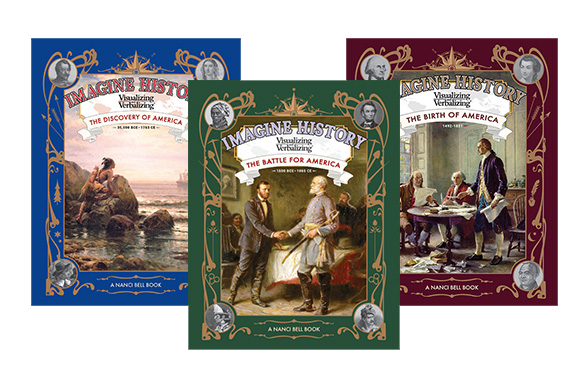
Like many of you, I’ve had the privilege of teaching children and adults over the years. Time and again, when I asked my students what they visualized for history, I was met with a blank stare. Not only did these students have difficulty visualizing and comprehending language, but they also had enormous information gaps. Many of those gaps were in history. I remember their faces. They weren’t sure if the American Civil War was before or after the American Revolution, or if ancient Egyptian civilization came before or after the Civil War.
Students often bemoan history classes because the content is boring and the curriculum involves memorizing what seems to be irrelevant facts and dates. Students don’t visualize the fascinating events and people that have shaped our world. History seems to be an array of random parts, unconnected and unrelated. More importantly, these kids lack the imagery associated with understanding history’s big picture.
Out of my desire to help these students, the idea of a Visualizing and Verbalizing® history curriculum was born. Imagine History was written to develop the imagery-language connection for American history. My hope is that, by bringing the imagery-language connection to a conscious level and applying it to historical content, students will better understand and enjoy history.
I hope these books will help you and your students time travel with imagery to make history come alive. Enjoy!
Imagine History can be used specifically with the steps of the Visualizing and Verbalizing (V/V®) program or as a stand-alone resource. The V/V program develops concept imagery—the ability to create an imaged gestalt from language—as a basis for comprehension, recall, and critical thinking. All steps of V/V can be practiced throughout the curriculum—from the Picture to Picture step up through Chapter Noting and Writing. Application of V/V to vocabulary and geography is essential throughout the series. It is important to remind students that comprehension and memory are improved when one visualizes the language one reads and hears.
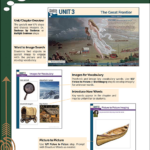 The content in Imagine History is uniquely written to help students visualize the gestalt and key details needed for recall, understanding, and higher order thinking. Students of all abilities can benefit, including students with disabilities, struggling learners, and even students who are proficient or advanced. It is important to note, however, that some students with a significant language comprehension weakness will likely benefit from explicit, direct instruction in the V/V program prior to, and/or during, instruction in this series.
The content in Imagine History is uniquely written to help students visualize the gestalt and key details needed for recall, understanding, and higher order thinking. Students of all abilities can benefit, including students with disabilities, struggling learners, and even students who are proficient or advanced. It is important to note, however, that some students with a significant language comprehension weakness will likely benefit from explicit, direct instruction in the V/V program prior to, and/or during, instruction in this series.
Constructing a lesson
Instructors can apply the steps of V/V to important pictures, vocabulary, and paragraphs. For example, you can use the Sentence by Sentence step at the beginning of a unit or chapter, or to introduce a challenging topic. Then apply the Whole Paragraph, Paragraph by Paragraph, and Whole Page steps throughout the rest of the lesson in order to move more efficiently through the content. Please note: not all pictures, vocabulary terms, and paragraphs need to be presented with a V/V step. The steps should be done selectively based on the needs of your students.
 Grade 3
Grade 3 Grade 4
Grade 4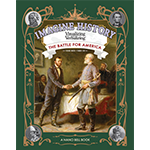 Grade 5
Grade 5
Students often bemoan history classes because the content is boring and the curriculum involves memorizing what seems to be irrelevant facts and dates. Students don’t visualize the fascinating events and people that have shaped our world. History seems to be an array of random parts, unconnected and unrelated. More importantly, these kids lack the imagery associated with understanding history’s big picture.
Out of my desire to help these students, the idea of a Visualizing and Verbalizing® history curriculum was born. Imagine History was written to develop the imagery-language connection for American history. My hope is that, by bringing the imagery-language connection to a conscious level and applying it to historical content, students will better understand and enjoy history.
I hope these books will help you and your students time travel with imagery to make history come alive. Enjoy!

Imagine History can be used specifically with the steps of the Visualizing and Verbalizing (V/V®) program or as a stand-alone resource. The V/V program develops concept imagery—the ability to create an imaged gestalt from language—as a basis for comprehension, recall, and critical thinking. All steps of V/V can be practiced throughout the curriculum—from the Picture to Picture step up through Chapter Noting and Writing. Application of V/V to vocabulary and geography is essential throughout the series. It is important to remind students that comprehension and memory are improved when one visualizes the language one reads and hears.
 The content in Imagine History is uniquely written to help students visualize the gestalt and key details needed for recall, understanding, and higher order thinking. Students of all abilities can benefit, including students with disabilities, struggling learners, and even students who are proficient or advanced. It is important to note, however, that some students with a significant language comprehension weakness will likely benefit from explicit, direct instruction in the V/V program prior to, and/or during, instruction in this series.
The content in Imagine History is uniquely written to help students visualize the gestalt and key details needed for recall, understanding, and higher order thinking. Students of all abilities can benefit, including students with disabilities, struggling learners, and even students who are proficient or advanced. It is important to note, however, that some students with a significant language comprehension weakness will likely benefit from explicit, direct instruction in the V/V program prior to, and/or during, instruction in this series.
Constructing a lesson
Instructors can apply the steps of V/V to important pictures, vocabulary, and paragraphs. For example, you can use the Sentence by Sentence step at the beginning of a unit or chapter, or to introduce a challenging topic. Then apply the Whole Paragraph, Paragraph by Paragraph, and Whole Page steps throughout the rest of the lesson in order to move more efficiently through the content. Please note: not all pictures, vocabulary terms, and paragraphs need to be presented with a V/V step. The steps should be done selectively based on the needs of your students.
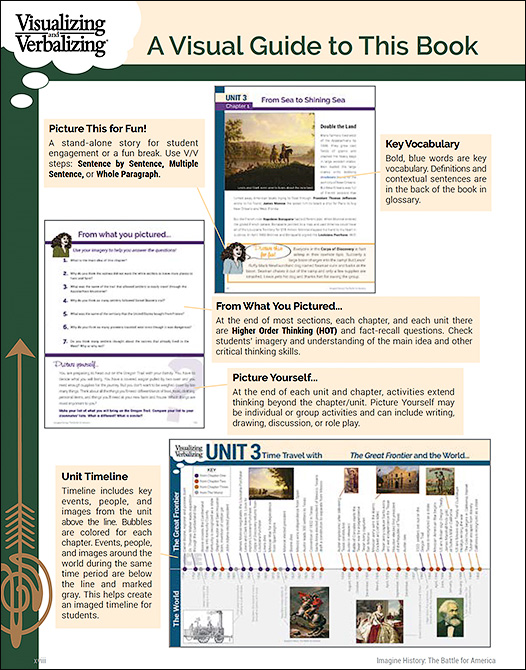
With Imagine History, students will be able to fully visualize and understand the important events of our history and the people who were part of them on a new level. The Imagine History series will bring history alive for them while at the same time align with most state curricula, giving students the knowledge they need to excel.
Click a book below to download a free chapter!
 Grade 3
Grade 3 Grade 4
Grade 4 Grade 5
Grade 5
Word Problems Made Easy

By Nanci Bell
Why can’t everyone think with numbers? What cognitive processes do some have that others do not? Some individuals easily understand the concepts underlying math processes. They quickly perform math calculations, mentally or on paper, and have an innate sense of whether or not an answer is correct. But for others math is an illogical enemy, filled with random memorization. For those who “get math,” the language of numbers turns into imagery and they “see” mathematical relationships. They use an internal language, with imagery, that lets them calculate and verify mathematics, and see its logic.
Understanding, problem solving, and computing in mathematics requires the ability to process the gestalt (whole)—another form of imagery. This ability is especially important to solve word problems. Problem solving requires mathematical cognition and that requires imagery. Concept imagery helps students understand when, “this part requires the function of addition” or “this part requires the function of multiplying fractions.” Here are some tips from the On Cloud Nine math program that you can use to help students solve word problems, from simple addition and subtraction to more advanced processes.
Here are some tips from the On Cloud Nine math program that you can use to help students solve word problems, from simple addition and subtraction to more advanced processes.
On Cloud Nine, or any math program, may reach a plateau of effectiveness if students have weakness in concept imagery. Therefore, some students may need to first develop imagery and language processing with the Visualizing and Verbalizing program before they apply concept imagery to mathematical computation.
Nanci Bell is the Co-Author of “On Cloud Nine” and the Co-Founder and Director of Lindamood-Bell Learning Processes.
Why can’t everyone think with numbers? What cognitive processes do some have that others do not? Some individuals easily understand the concepts underlying math processes. They quickly perform math calculations, mentally or on paper, and have an innate sense of whether or not an answer is correct. But for others math is an illogical enemy, filled with random memorization. For those who “get math,” the language of numbers turns into imagery and they “see” mathematical relationships. They use an internal language, with imagery, that lets them calculate and verify mathematics, and see its logic.
Understanding, problem solving, and computing in mathematics requires the ability to process the gestalt (whole)—another form of imagery. This ability is especially important to solve word problems. Problem solving requires mathematical cognition and that requires imagery. Concept imagery helps students understand when, “this part requires the function of addition” or “this part requires the function of multiplying fractions.”
 Here are some tips from the On Cloud Nine math program that you can use to help students solve word problems, from simple addition and subtraction to more advanced processes.
Here are some tips from the On Cloud Nine math program that you can use to help students solve word problems, from simple addition and subtraction to more advanced processes.
- Read or listen to the whole problem: Students read the problem from beginning to end, to know where the problem is heading. If they start solving the problem too soon, they may have an answer, but not the one the problem requests.
- Visualize and verbalize the gestalt: Students consciously create images to match the words, then verbalize their imagery. The images are created for the gestalt of the main points of the passage, and should be just enough to match without extra detail.
- List the math facts that are known: Students list the math facts that are definite on the left side of the paper under the heading, “What I Know.”
- List what needs to be known: Students list the question(s) the problem asks on the right side of the paper.
- State the problem in sentence form: Students state the problem in their own words, orally or in writing.
- Convert the sentence to numbers and solve: Students cross out the words as they convert them to numbers presented from the problem. This calls attention to which words turn into which function. For example, the words “more” and “joined” turn into addition when converted to an equation.
- Verify that all parts of “Need to Know” were answered: Students cross out on the right side of the paper each item they have answered.
On Cloud Nine, or any math program, may reach a plateau of effectiveness if students have weakness in concept imagery. Therefore, some students may need to first develop imagery and language processing with the Visualizing and Verbalizing program before they apply concept imagery to mathematical computation.
Nanci Bell is the Co-Author of “On Cloud Nine” and the Co-Founder and Director of Lindamood-Bell Learning Processes.
Strategies to Improve Comprehension

The Imagine That! Stories are a great supplement to the Visualizing and Verbalizing® program. They are also used with Seeing Stars® and LiPS® students to develop fluency and comprehension. These high-interest and engaging stories include graded reading levels to develop the imagery-language connection for listening and reading comprehension. Here are some helpful hints to improve comprehension with the Imagine That! Stories:
- Practice both reading and listening comprehension,even for older students and students with decoding difficulties. Alternate between reading an Imagine That! story and having the student read the story. Students love the high interest, fun, and engaging content found in Fascinating People and Wonders of the Natural World.
- Overlap grade levels depending on the task. This allows you to differentiate your lesson based on student need. Example: Try a Whole Paragraph task at a 4th-grade level and then try a Multisentence by Multisentence task with a 5th-grade story.
- Scaffold the lesson by introducing unknown vocabulary first. Show a picture of a new vocabulary term or do a quick Word Imaging activity to check that the student is visualizing the word.
- Develop Higher Order Thinking skills by prompting the student. Refer to student's key images from the text. Example: From everything you pictured, what do you predict will happen next?
- Extend the lesson to address English Language Arts standards, such as asking students to cite evidence from text. You can prompt students to recall their images that support the evidence from the story.
- Extend the lesson to a writing activity, where students use their imagery to create cue cards for each "chunk" of the story. The cue cards are then sequenced in an outline format and used to create a coherent written summary. A card will include the main idea (image) of each chunk along with the most important supporting details.
7 Best Practices to Improve Reading and Comprehension for Your English Learners

Visualizing and Verbalizing (V/V)
Our sensory-cognitive programs are often a critical missing piece in English Language Development. By adding the overlooked component of explicit sensory-cognitive instruction, we have seen evidence of an acceleration of language and literacy skills for many English Learners. Here's how our programs work:- Oral Language Development Learning a language is a process, and the more ELs use English, the more proficient they will become. V/V engages students in frequent, oral practice. Steps include structured routines where students must verbalize key details of the story, recall key concepts, summarize in order, and paraphrase the story back.
- Scaffolding The Socratic questioning method used systematically throughout the V/V® process allows you to differentiate and scaffold language depending on the proficiency level of students (e.g., Beginning, Emerging, Advanced). Beginning ELs need lots of choice-contrast questioning, teacher modeling, and a heavy emphasis on vocabulary acquisition. There is a decrease in prompting and modeling for Emerging ELs and a transition to more open-ended questions. You can expect more verbalization and vocabulary development.
- Explicit Vocabulary Development In V/V, students visualize and verbalize for additional oral language development, and add new vocabulary terms. For example: (T) "What do you picture for the word 'perimeter'?" (S) "I see a shape like a rectangle, and I picture the four separate sides, and then I just add the four sides up to get the answer". Extra tip: For Spanish-speaking students, teach them that this word is a cognate ("el perímetro" in Spanish).
Seeing Stars
- Foundations of Reading Seeing Stars systematically develops symbol imagery as a basis for orthographic awareness, phonemic awareness, and overall word reading ability. This is critical for ELs because English is orthographically complex with substantial variability, while other languages like Spanish are more predictable.
- Frequent Interaction with phoneme/grapheme relationship Symbol imagery exercises utilized throughout the steps of Seeing Stars provide for frequent interaction and practice with the alphabetic principles of English, and the phoneme-grapheme relationship.
- Acceleration For ELs, symbol imagery and automatic sight word recognition are critical for accelerating decoding skills and attaining fluency.
Lindamood Phoneme Sequencing® (LiPS® Program)
- Explicit, multisensory instruction When integrated with the Seeing Stars® program, LiPS explicitly develops the foundations of reading, using a systematic, multisensory approach to anchor and stabilize sounds and letters, particularly those not transferable from a native language to a second language. LiPS provides a concrete, multisensory tool to strengthen phonemic awareness and aid in pronunciation.
See how this Colorado school closed the achievement gap for English Learners.
How to Deliver an Effective Seeing Stars® Lesson: 3 Tips for Dynamic Instruction

Tip 1: DRIVE THE SENSORY BUS.
Use language to directly and explicitly stimulate the sensory input of symbol imagery. For example, the language "What letters do you picture for the word 'thought'?" stimulates imagery, whereas the language, "How do you spell 'thought'?" does not.Tip 2: EMPHASIZE ORTHOGRAPHIC PROCESSING.
In Seeing Stars, only a few decoding rules are included (e.g., "When two vowels go walking...") because we don’t learn to read and spell with fluency by memorizing lots of rules. So don’t belabor learning, remembering, and reciting a bunch of rules. Remember your goal is to emphasize orthographic processing. Strengthen symbol imagery with the air-writing strategy and symbol imagery exercises so students can quickly self-monitor and self-correct for independence.Tip 3: FOCUS ON FLUENCY.
Many struggling students, including those with dyslexia, can sound out words and learn syllabication. However word reading is slow and laborious, and they are not independent readers. During the "Decode, Decode, Decode" task, emphasize rapid, accurate word attack and decoding lots of words (the Seeing Stars Decoding Workbooks have 20 words per lesson!). Minimize pauses for word analysis or symbol imagery exercises during this task. When your instruction focus shifts to more contextual reading practice, let a few of the small decoding errors go if they don't impact comprehension of the passage. Your goal now is for the student to experience confidence and fluency while reading in context. Reminder: Read Chapter 17 in your Seeing Stars teacher’s manual –Integration for Contextual Reading Fluency and Comprehension.How to Deliver an Effective Visualizing and Verbalizing Lesson: 3 Tips for Dynamic Instruction

Tip 1: RELEVANT QUESTIONING IS THE ESSENCE OF GOOD V/V.
The quality of your questioning is the difference between concept imagery developing quickly and accurately, and concept imagery remaining weak and unstable. Remember the Goldilocks principle: not too much, not too little, but just right. Your questions should be focused on the gestalt of the story. Be careful not to over-question for extraneous details that may cause the student to lose the gestalt. Don't assume imagery for the most important concepts—ask just enough detailed questions for the student to prove to you that she really is visualizing the main concepts. Reminder: Read Chapter 19 in your V/V teacher's manual—Relevant Questioning is the Difference.Tip 2: PACING FOR AUTOMATICITY
Good pacing of V/V requires overlapping of steps. Don't keep your student too long in grade-level material that is too easy, and don't keep your student too long on one step or level of V/V. Rather than complete mastery of a step, look for enough competence to overlap to the next step. Good pacing also means getting the grade level of material just right to differentiate instruction–not too easy and not too difficult. Reminder: Chapter 20 in the V/V manual describes good pacing strategies in more detail.Tip 3: STUDENT ENGAGEMENT
Students struggling to process language have experienced failure and frustration in school—and often blame themselves. The steps and materials in V/V will naturally encourage student engagement. Here's how:- Socratic questioning—respond to a student's response, using positive feedback, which encourages risk taking and reduces fear of making an error. With choice/contrast questions, you can meet ALL students where they are, differentiating your questioning based on their diverse skill sets.
- "Active Student Response" strategies can include Action Response (thumbs up/down if your picture matches), Oral Response (pass out Structure Words randomly and each student verbalizes his/her word), and Written Response (use V/V Workbooks for students to write key images).
- "Think-Pair-Share" can be used after teacher prompts: "What do those words make you picture?"
Seven Essential Strategies to Strengthen Language and Literacy Skills for English Learners

by Margaret Towner
What do you picture for "See ya"?
A teacher stood at her 4th-grade classroom door to say goodbye to her students.
"See ya!" she said.
Maribel looked at her in bewilderment and said, "Silla?"
The teacher nodded and again said, "See ya. See ya tomorrow."
Maribel nodded her head and left the classroom. The next day she brought several pictures of chairs cut out of magazines, and handed them to her teacher.
"What are these for?" her teacher asked.
" Silla, you tell me silla."
For anyone using the Visualizing and Verbalizing® program to develop the imagery-language connection, the above exchange might have you saying "What do those words make you picture?!"
During my time at Long Beach Unified School District (LBUSD) in Southern California, we helped our high percentage of English Learners (ELs) meet the dual goals of English acquisition and standards-based proficiency. We worked with students like Maribel to provide them with a critical component of language and literacy acquisition: sensory-cognitive instruction.
In partnership with Lindamood-Bell, we utilized the sensory-cognitive strategies in the Seeing Stars® and LiPS® programs to address phonemic awareness, phonics, word recognition, and reading fluency. We developed the imagery-language connection with the Visualizing and Verbalizing (V/V®) program to address vocabulary development, listening and speaking skills, language comprehension, writing, and higher order thinking.
These essential strategies perfectly complement, and enhance, existing best practices used with English learners. Here's how:
Visualizing and Verbalizing (V/V)
1. Oral Language Development - Learning a second language is a complex process, and the more ELs have opportunities to actively use English in educational settings, the more proficient they will become. V/V engages students in frequent and sequential oral practice. Steps include structured routines where students must visualize and verbalize key details of the text, recall information, sequence events, and paraphrase the story back. During these routines, students are practicing structured language well over 50% of the lesson.
2. Scaffolding - The Socratic questioning method used systematically throughout the V/V process allows you to differentiate and scaffold language depending on the English language proficiency level of students (e.g., Emerging, Expanding, Bridging). This is supported by Vygotsky's Zone of Proximal Development. The levels of linguistic support are adjusted accordingly, from substantial support, to moderate, to light support. For example, Emerging ELs need lots of choice-contrast questioning, teacher modeling, and a heavy emphasis on vocabulary acquisition (the "bricks," to borrow from Susana Dutro's analogy). With Expanding ELs, there is a decrease in your prompting and modeling while transitioning more to open-ended questions. You can expect more verbalization and vocabulary development (now "bricks and mortar").
3. Explicit Vocabulary Development - Vocabulary instruction goes beyond teaching the definition and beyond providing supplemental materials. Exploring language in context—using V/V strategies and dialogue—helps students to practice and anchor new vocabulary and language structures. For example: (T) "For this math problem, what do you picture for the word 'perimeter?'" (S) "I see a shape like a rectangle, and I picture the four separate sides, and then I just add the four sides up to get the answer."
Extra tip: For Spanish speaking students, teach them that this word is a cognate ("el perímetro" in Spanish).
Seeing Stars
4. Foundations of Reading - Seeing Stars systematically develops symbol imagery as a basis for orthographic awareness, phonemic awareness, and overall word reading ability. This is critical for ELs because English is orthographically complex with substantial variability, while other languages like Spanish are more predictable. The English letter "a" for example has a different phoneme/grapheme relation in the following words: "cat," "same," "about," "cart," and "father." English also presents challenges with non-phonetic words like "laugh" or "action." Thus focusing on strategies that emphasize orthographic processing and visual memory, which underlie automatic word recognition and reading fluency, is key to stabilizing the foundations of reading.
5. Frequent Interaction with Phoneme/Grapheme Relationship - Symbol imagery exercises utilized throughout the steps of Seeing Stars provide for frequent interaction and practice with the alphabetic principles of English, and also the phoneme-grapheme relationship. For example, during the Letter Imagery step: (T) shows a consonant/vowel card and takes it away. (S) Air writes the letter(s), says the letter name, and then produces the corresponding sound. This is useful for Spanish speakers, especially for learning vowels, because vowel names and sounds are the same in their primary language.
6. Acceleration - For ELs, symbol imagery and automatic sight word recognition are critical for accelerating decoding skills and attaining fluency. Acceleration is essential for ELs to close the gap between their English acquisition, their reading level, and their grade-level standards. While some word reading rules and expectancies can be helpful (e.g. "When two vowels go walking, the first one does the talking"), they can also add another level of language complexity and actually slow down the decoding process. Seeing Stars transitions ELs from decoding to high frequency Star Words for instant word recognition and fluency.
Lindamood Phoneme Sequencing (LiPS)
7. Explicit, Multisensory Instruction - When integrated with the Seeing Stars program, LiPS explicitly develops the foundations of reading, using a systematic, multisensory approach to anchor and stabilize sounds and letters, particularly those not transferable from native language to second language. Early "pruning" of the ability to perceive phonemes not present in your primary language makes it difficult to perceive those phonemes in a second language. LiPS provides a concrete, multisensory tool to strengthen phonemic awareness and aid in pronunciation. For example, students can map the /th/ sound, as in the word "Thursday," to a label that matches the articulatory features of that sound—in this case, a Tongue Cooler. This gives ELs concrete language and sensory feedback to assist in discriminating sounds and letters within words.
By adding the missing component of explicit, sensory-cognitive instruction, we have been able to accelerate language and literacy skills for many of our English learners in LBUSD. It is so encouraging to see progress with ELs elsewhere, such as the improvements in Colorado where high EL, low-performing schools have successfully used the programs to accelerate student academic growth. Now more than ever, with the growing number of ELs in our country and the demands of the Common Core, we need to continue improving our instructional practices to meet the language and literacy skills they need and deserve to become successful in school.
Margaret Towner is a former teacher, professional development trainer, and literacy coach for Long Beach Unified School District, specializing in language and literacy development for English Learners throughout her career.
What do you picture for "See ya"?
A teacher stood at her 4th-grade classroom door to say goodbye to her students.
"See ya!" she said.
Maribel looked at her in bewilderment and said, "Silla?"
The teacher nodded and again said, "See ya. See ya tomorrow."
Maribel nodded her head and left the classroom. The next day she brought several pictures of chairs cut out of magazines, and handed them to her teacher.
"What are these for?" her teacher asked.
" Silla, you tell me silla."
For anyone using the Visualizing and Verbalizing® program to develop the imagery-language connection, the above exchange might have you saying "What do those words make you picture?!"
During my time at Long Beach Unified School District (LBUSD) in Southern California, we helped our high percentage of English Learners (ELs) meet the dual goals of English acquisition and standards-based proficiency. We worked with students like Maribel to provide them with a critical component of language and literacy acquisition: sensory-cognitive instruction.
In partnership with Lindamood-Bell, we utilized the sensory-cognitive strategies in the Seeing Stars® and LiPS® programs to address phonemic awareness, phonics, word recognition, and reading fluency. We developed the imagery-language connection with the Visualizing and Verbalizing (V/V®) program to address vocabulary development, listening and speaking skills, language comprehension, writing, and higher order thinking.
These essential strategies perfectly complement, and enhance, existing best practices used with English learners. Here's how:
Visualizing and Verbalizing (V/V)
1. Oral Language Development - Learning a second language is a complex process, and the more ELs have opportunities to actively use English in educational settings, the more proficient they will become. V/V engages students in frequent and sequential oral practice. Steps include structured routines where students must visualize and verbalize key details of the text, recall information, sequence events, and paraphrase the story back. During these routines, students are practicing structured language well over 50% of the lesson.
2. Scaffolding - The Socratic questioning method used systematically throughout the V/V process allows you to differentiate and scaffold language depending on the English language proficiency level of students (e.g., Emerging, Expanding, Bridging). This is supported by Vygotsky's Zone of Proximal Development. The levels of linguistic support are adjusted accordingly, from substantial support, to moderate, to light support. For example, Emerging ELs need lots of choice-contrast questioning, teacher modeling, and a heavy emphasis on vocabulary acquisition (the "bricks," to borrow from Susana Dutro's analogy). With Expanding ELs, there is a decrease in your prompting and modeling while transitioning more to open-ended questions. You can expect more verbalization and vocabulary development (now "bricks and mortar").
3. Explicit Vocabulary Development - Vocabulary instruction goes beyond teaching the definition and beyond providing supplemental materials. Exploring language in context—using V/V strategies and dialogue—helps students to practice and anchor new vocabulary and language structures. For example: (T) "For this math problem, what do you picture for the word 'perimeter?'" (S) "I see a shape like a rectangle, and I picture the four separate sides, and then I just add the four sides up to get the answer."
Extra tip: For Spanish speaking students, teach them that this word is a cognate ("el perímetro" in Spanish).
Seeing Stars
4. Foundations of Reading - Seeing Stars systematically develops symbol imagery as a basis for orthographic awareness, phonemic awareness, and overall word reading ability. This is critical for ELs because English is orthographically complex with substantial variability, while other languages like Spanish are more predictable. The English letter "a" for example has a different phoneme/grapheme relation in the following words: "cat," "same," "about," "cart," and "father." English also presents challenges with non-phonetic words like "laugh" or "action." Thus focusing on strategies that emphasize orthographic processing and visual memory, which underlie automatic word recognition and reading fluency, is key to stabilizing the foundations of reading.
5. Frequent Interaction with Phoneme/Grapheme Relationship - Symbol imagery exercises utilized throughout the steps of Seeing Stars provide for frequent interaction and practice with the alphabetic principles of English, and also the phoneme-grapheme relationship. For example, during the Letter Imagery step: (T) shows a consonant/vowel card and takes it away. (S) Air writes the letter(s), says the letter name, and then produces the corresponding sound. This is useful for Spanish speakers, especially for learning vowels, because vowel names and sounds are the same in their primary language.
6. Acceleration - For ELs, symbol imagery and automatic sight word recognition are critical for accelerating decoding skills and attaining fluency. Acceleration is essential for ELs to close the gap between their English acquisition, their reading level, and their grade-level standards. While some word reading rules and expectancies can be helpful (e.g. "When two vowels go walking, the first one does the talking"), they can also add another level of language complexity and actually slow down the decoding process. Seeing Stars transitions ELs from decoding to high frequency Star Words for instant word recognition and fluency.
Lindamood Phoneme Sequencing (LiPS)
7. Explicit, Multisensory Instruction - When integrated with the Seeing Stars program, LiPS explicitly develops the foundations of reading, using a systematic, multisensory approach to anchor and stabilize sounds and letters, particularly those not transferable from native language to second language. Early "pruning" of the ability to perceive phonemes not present in your primary language makes it difficult to perceive those phonemes in a second language. LiPS provides a concrete, multisensory tool to strengthen phonemic awareness and aid in pronunciation. For example, students can map the /th/ sound, as in the word "Thursday," to a label that matches the articulatory features of that sound—in this case, a Tongue Cooler. This gives ELs concrete language and sensory feedback to assist in discriminating sounds and letters within words.
By adding the missing component of explicit, sensory-cognitive instruction, we have been able to accelerate language and literacy skills for many of our English learners in LBUSD. It is so encouraging to see progress with ELs elsewhere, such as the improvements in Colorado where high EL, low-performing schools have successfully used the programs to accelerate student academic growth. Now more than ever, with the growing number of ELs in our country and the demands of the Common Core, we need to continue improving our instructional practices to meet the language and literacy skills they need and deserve to become successful in school.
Margaret Towner is a former teacher, professional development trainer, and literacy coach for Long Beach Unified School District, specializing in language and literacy development for English Learners throughout her career.




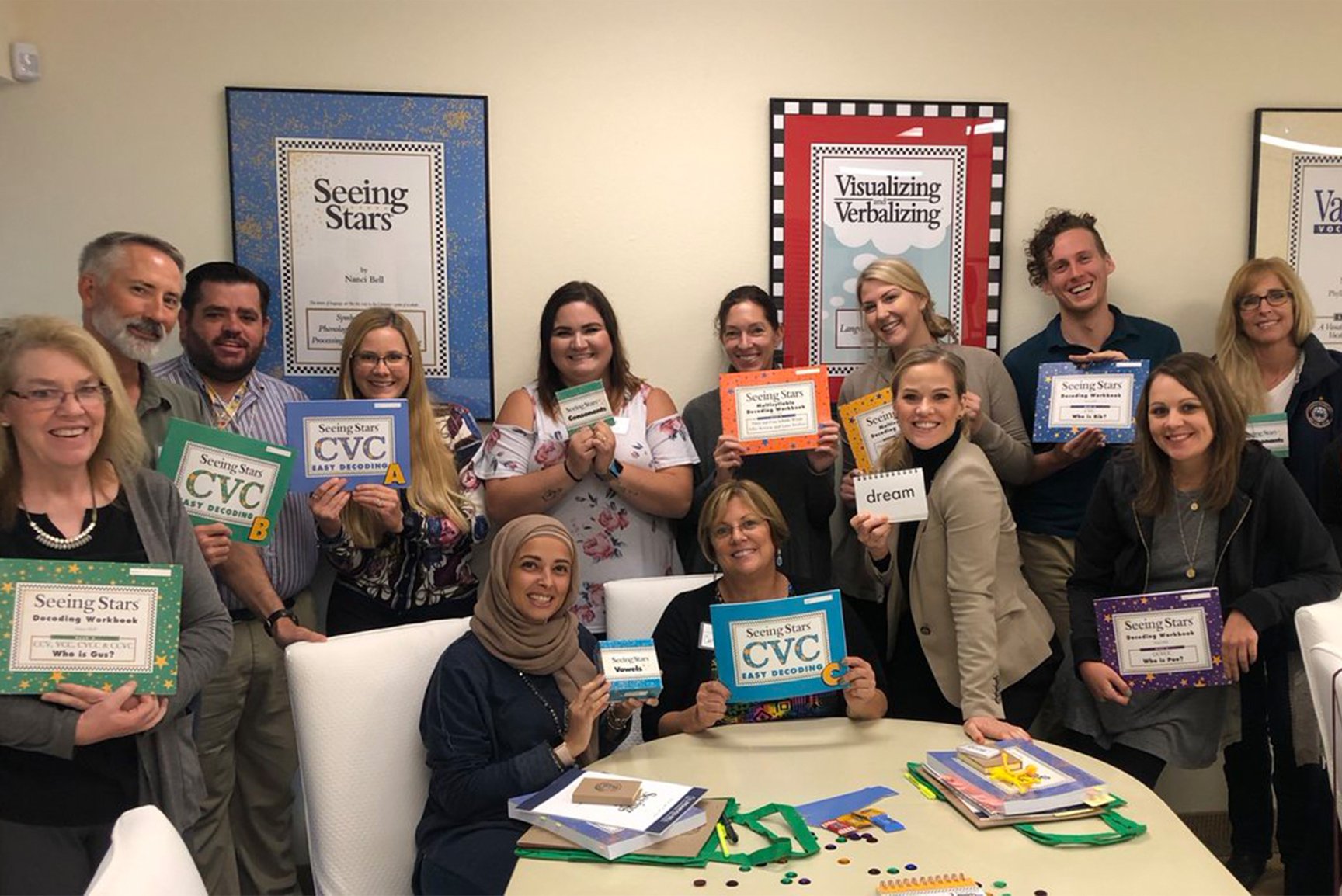
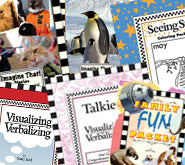


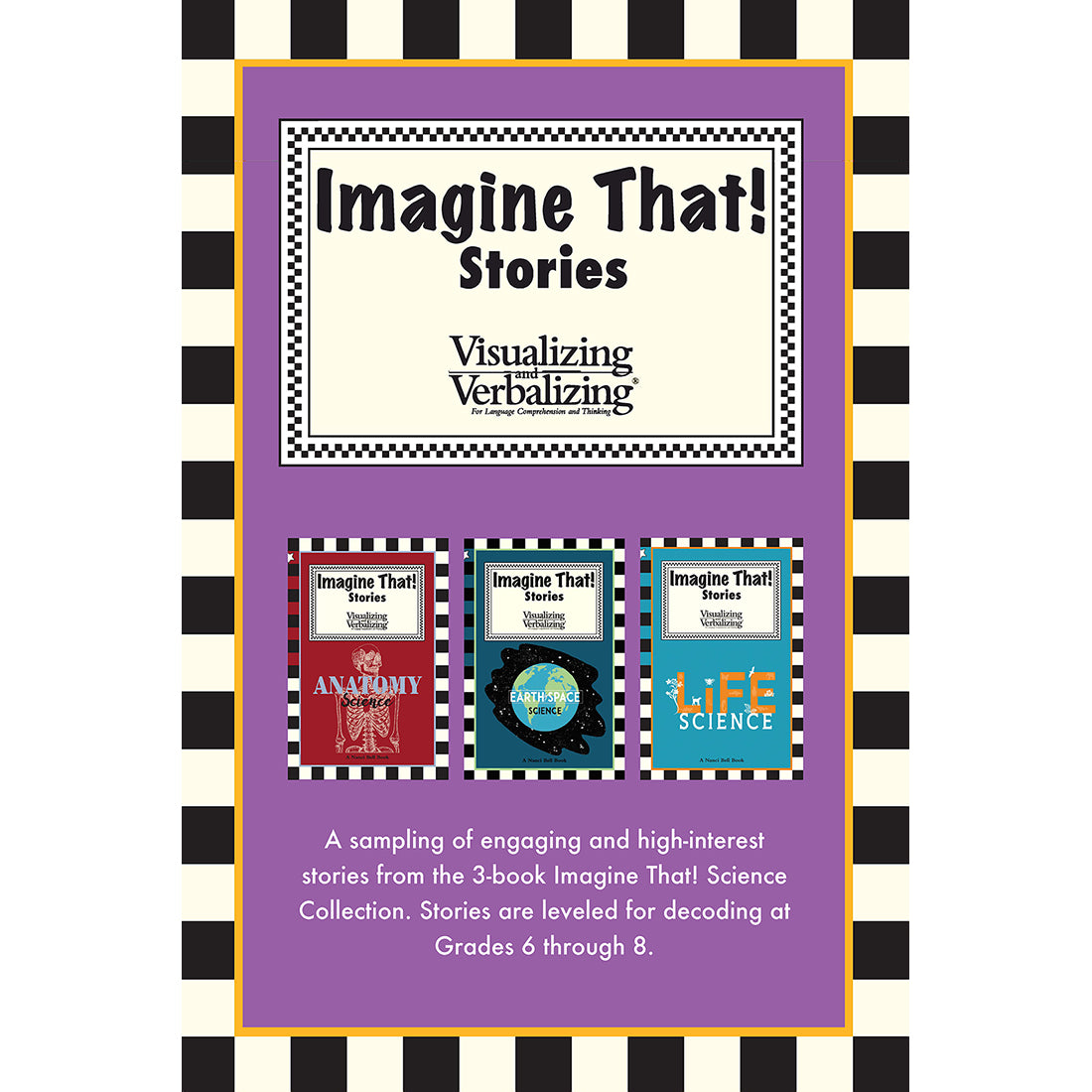
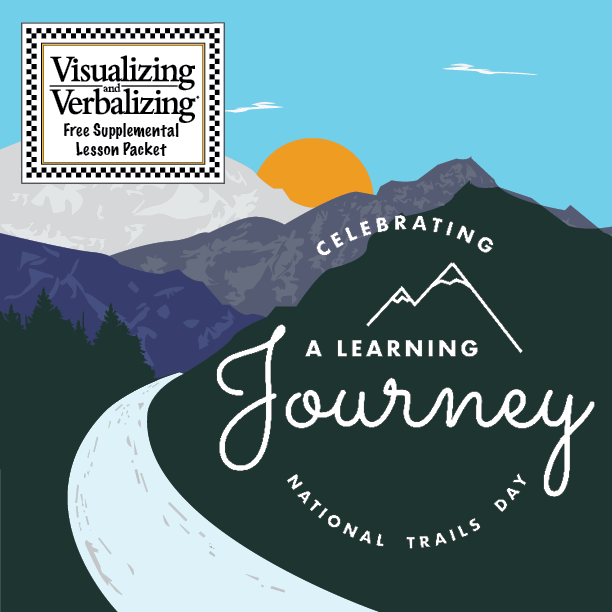
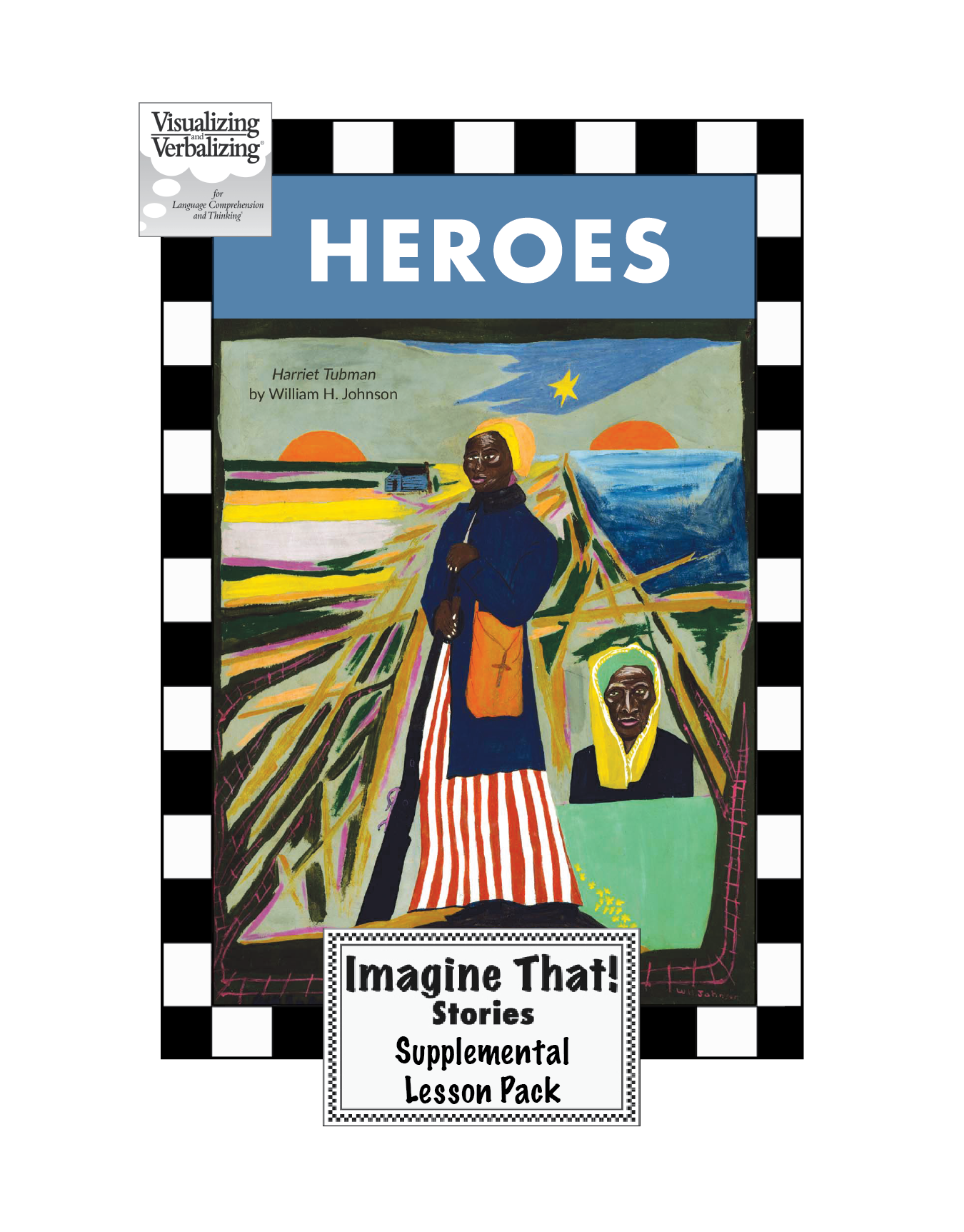
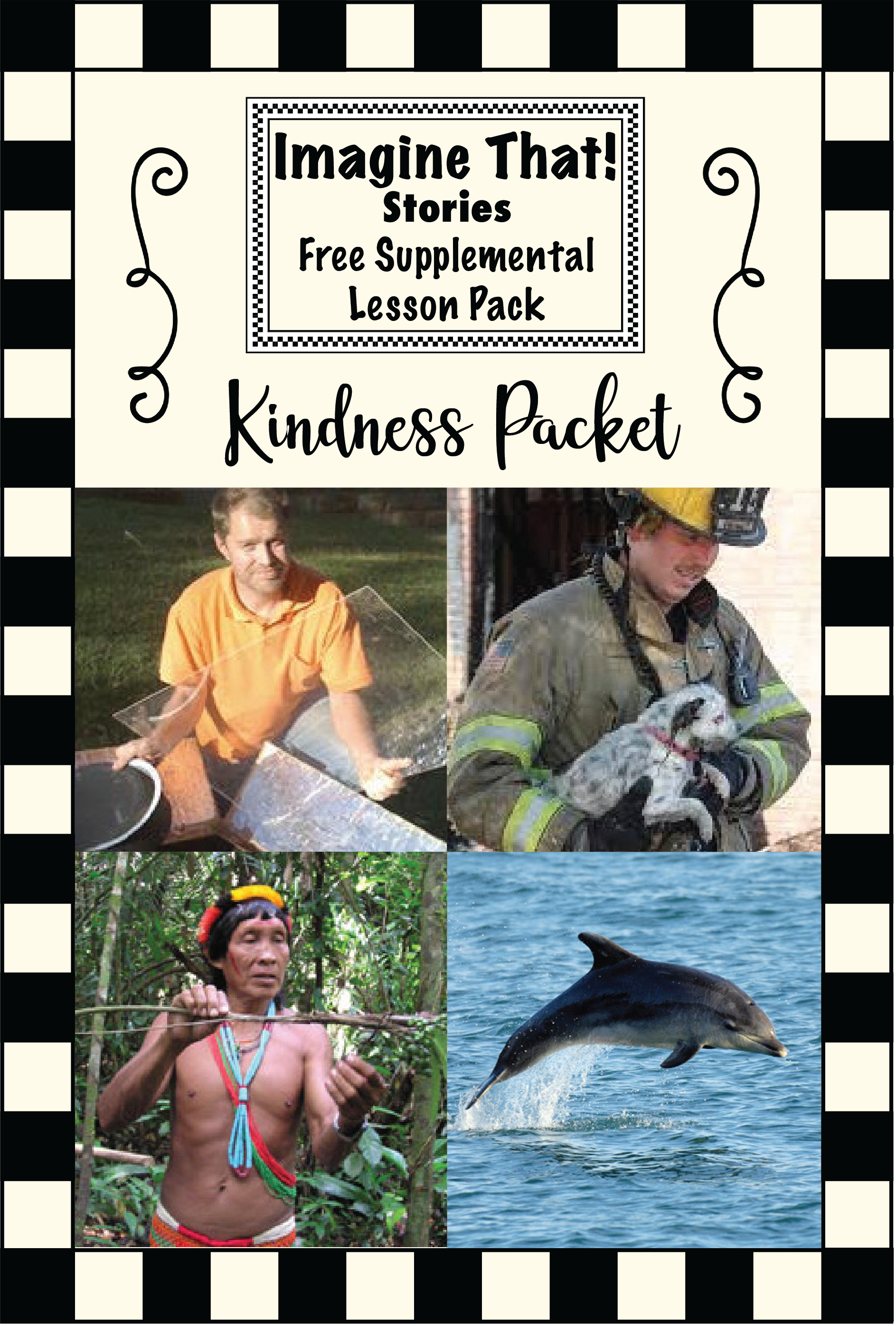
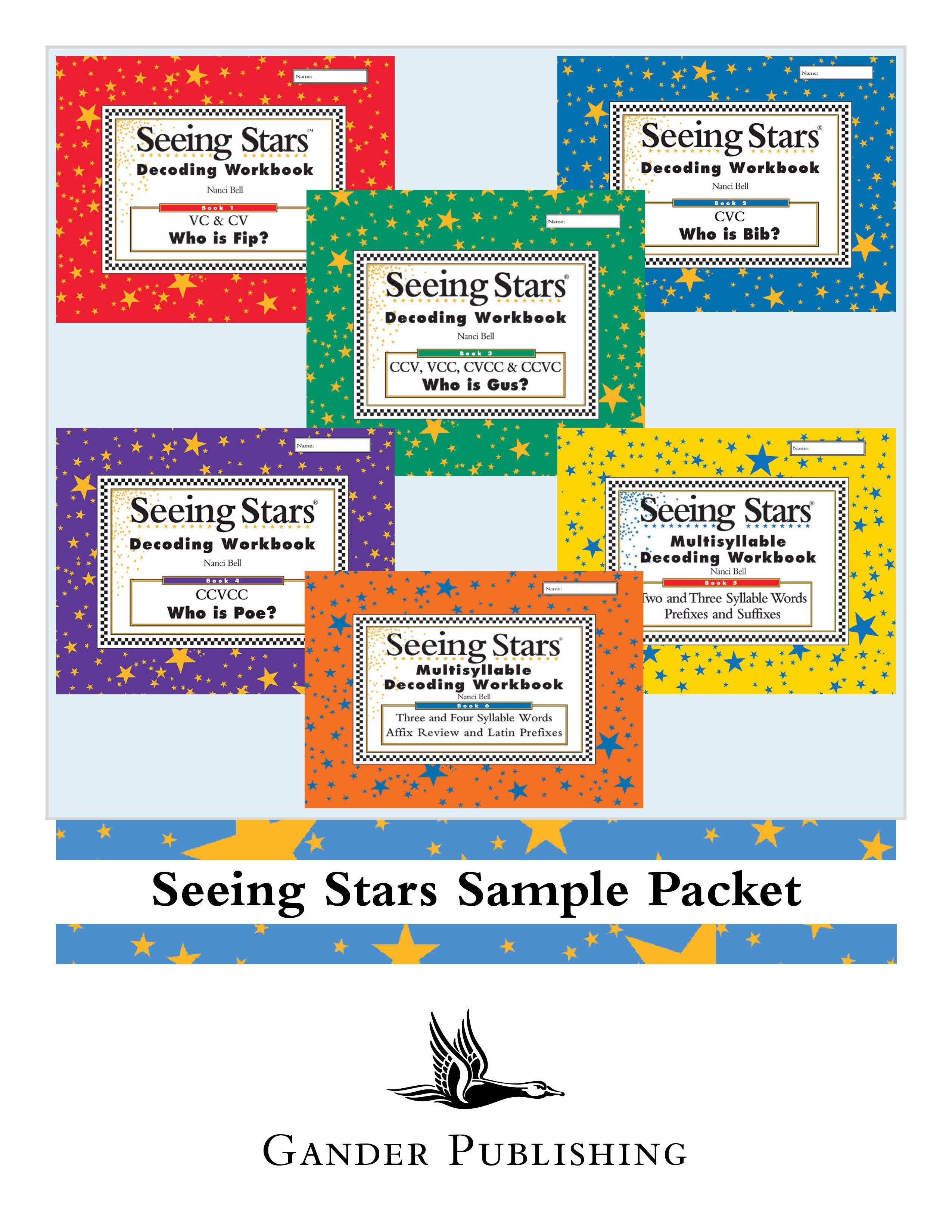

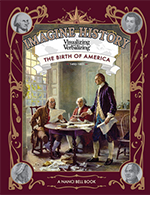

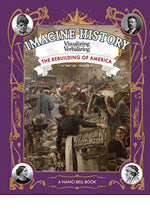
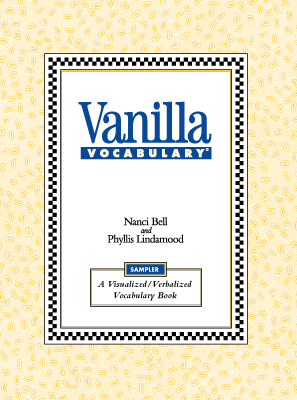
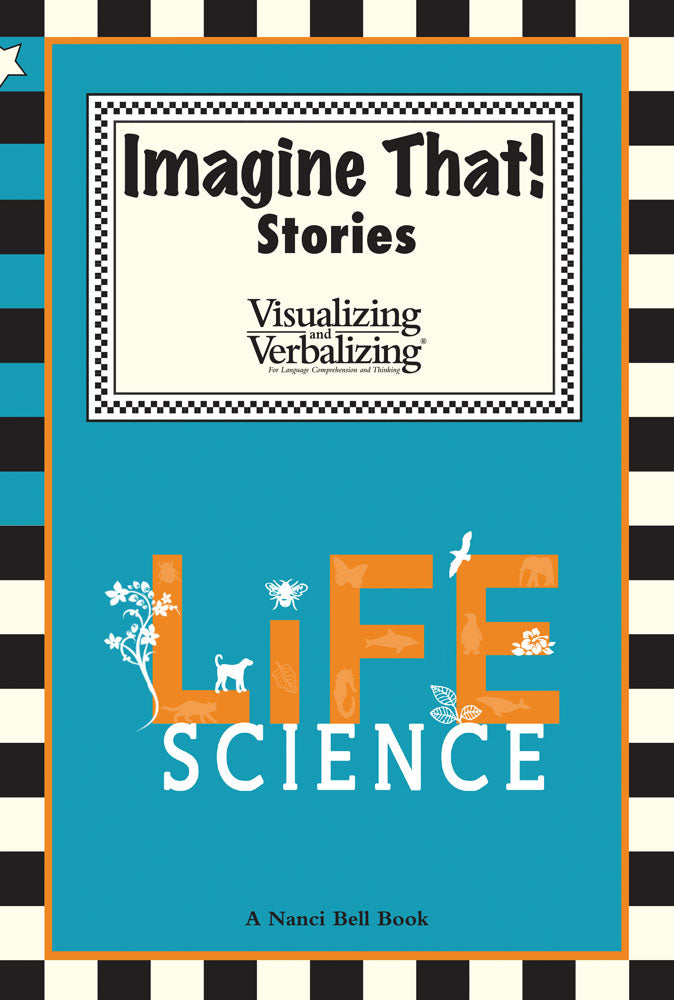
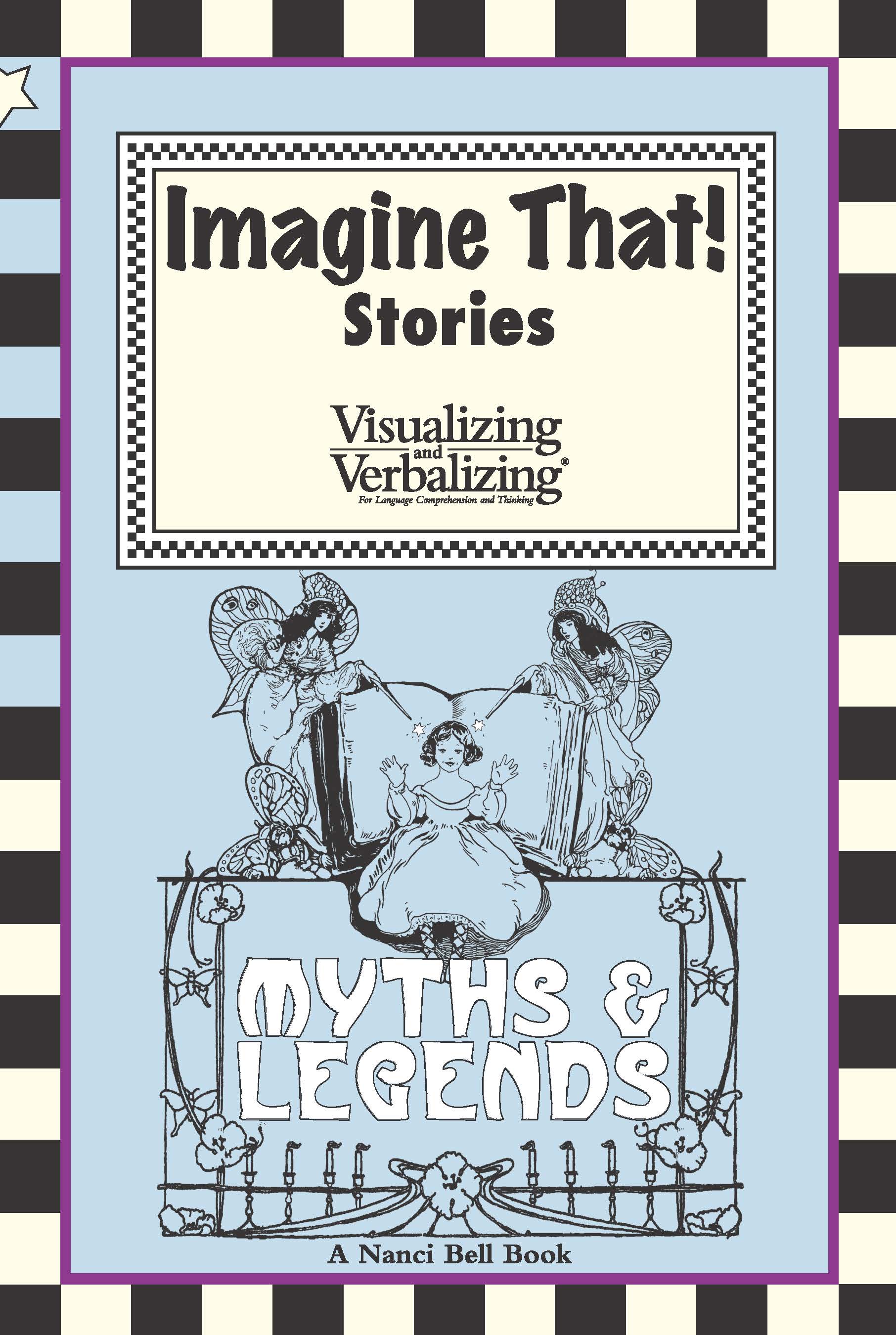
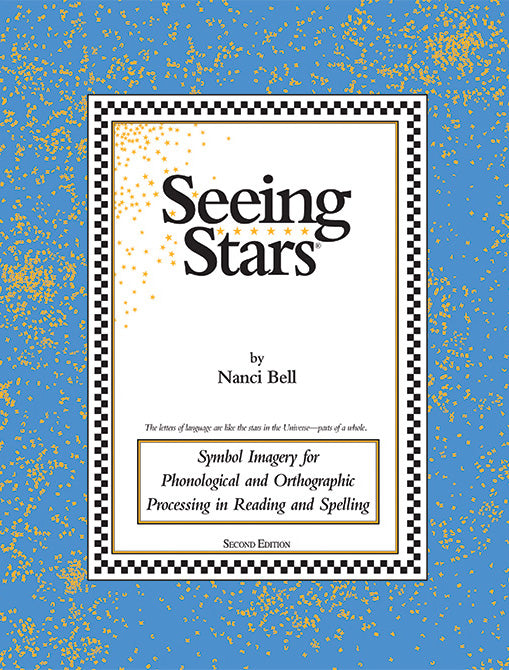
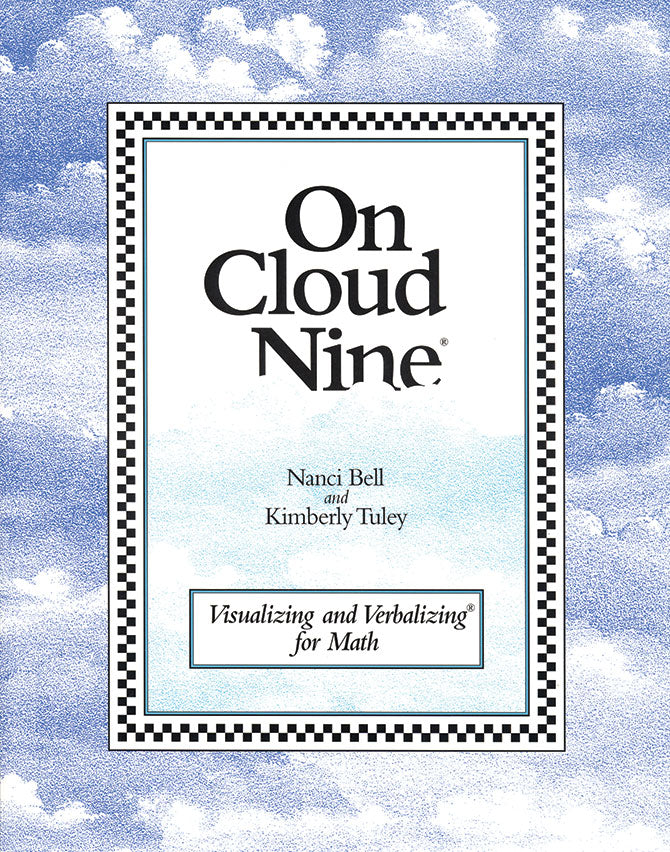
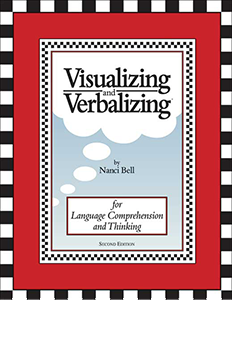

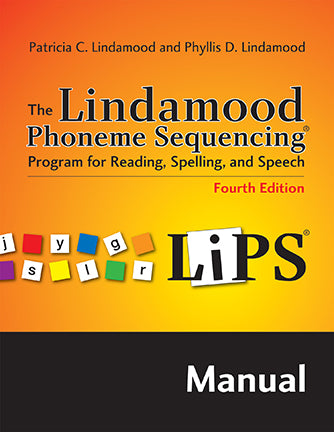


Socialize and Connect
Connect with us for the latest news, success stories, research, promotions, and more!